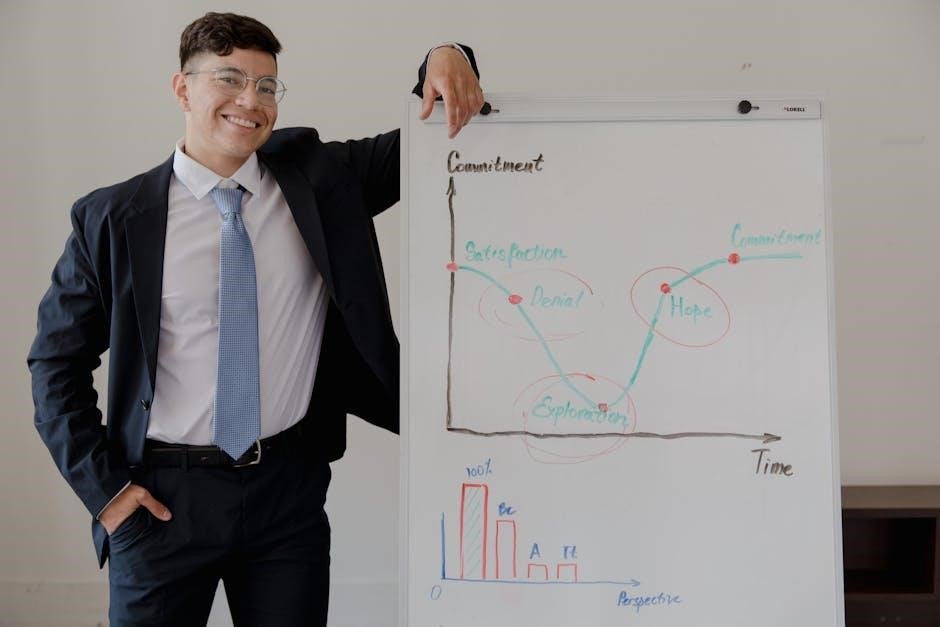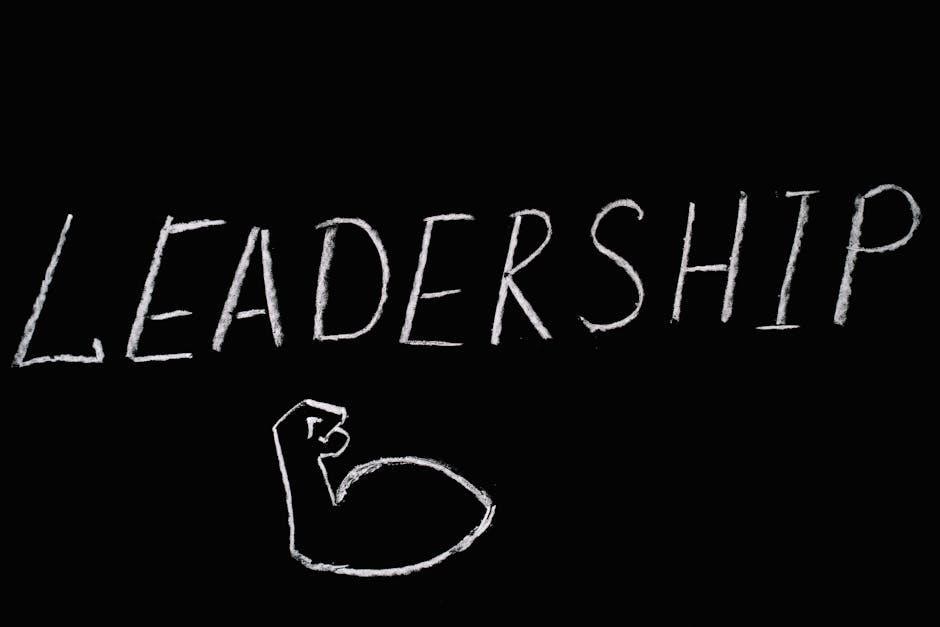
Supervision is a systematic process of monitoring and improving instruction, while instructional leadership focuses on guiding teachers to enhance student learning and educational outcomes effectively.
1.1 Definition and Overview
Supervision and instructional leadership are integral components of educational management, focusing on enhancing teaching practices and student learning outcomes. Supervision involves monitoring and supporting teachers to improve instructional quality, while instructional leadership emphasizes guiding educators to create effective learning environments. Together, they aim to foster professional growth, align teaching strategies with curriculum goals, and promote academic excellence. These practices are collaborative, involving feedback, coaching, and reflective discussions to empower teachers. Effective supervision and leadership ensure that schools maintain high standards, address challenges, and adapt to evolving educational needs. They form the backbone of school improvement efforts, ensuring that teaching and learning are aligned with institutional missions and student aspirations.
1.2 Historical Development

The concept of supervision and instructional leadership has evolved significantly over time. In the early 20th century, supervision focused on monitoring teacher compliance with curriculum standards. However, by the late 20th century, the role expanded to include instructional leadership, emphasizing teacher development and student learning. This shift was driven by the need for accountability and improved educational outcomes. The 1980s and 1990s saw the rise of transformational leadership theories, which emphasized collaboration and shared decision-making. Today, instructional leadership is recognized as a critical driver of school improvement, with leaders focusing on fostering professional growth, innovation, and data-driven practices. This historical progression highlights the transition from hierarchical oversight to a more collaborative, student-centered approach in educational supervision and leadership.

The Role of Instructional Leaders
Instructional leaders foster teaching excellence and learning by aligning practices with the school’s mission, empowering educators, and promoting professional growth and innovation in education.

2.1 Responsibilities in Supervision
Instructional leaders are responsible for monitoring teaching practices, providing constructive feedback, and ensuring alignment with educational goals. They evaluate teacher performance, identify professional development needs, and support curriculum implementation. Supervision involves fostering a collaborative environment, addressing instructional challenges, and promoting innovative teaching strategies. Leaders also ensure compliance with educational standards while encouraging continuous improvement in teaching and learning. Their role is pivotal in enhancing teacher effectiveness and student achievement through targeted support and strategic guidance.
2.2 The Impact on Teacher Performance
Effective instructional supervision significantly enhances teacher performance by fostering professional growth and improving instructional practices. Leaders who engage in regular feedback, mentoring, and coaching empower teachers to refine their skills and adapt to evolving educational demands. Supervision that focuses on constructive dialogue and collaborative problem-solving helps teachers identify areas for improvement and implement innovative strategies. This, in turn, leads to increased teacher confidence, improved classroom management, and enhanced student learning outcomes. Moreover, when instructional leaders prioritize teacher development, they create a supportive environment that encourages continuous improvement and accountability. Ultimately, the impact of supervision is evident in the measurable advancements in teaching quality and student achievement, underscoring its critical role in educational success.

Approaches to Instructional Supervision
Instructional supervision involves various approaches like clinical supervision and solution-focused methods, aiming to enhance teacher development and improve student learning outcomes through structured feedback and collaborative support.

3.1 Clinical Supervision Cycle
The clinical supervision cycle is a structured, collaborative process designed to enhance teacher effectiveness and student learning. It involves four key phases: planning, observation, analysis, and action. In the planning phase, supervisors and teachers set goals and discuss strategies. During observation, the supervisor assesses teaching practices, focusing on specific areas for improvement. The analysis phase involves reviewing data and providing constructive feedback, while the action phase includes implementing changes and monitoring progress. This cyclical approach fosters professional growth, promotes reflective practice, and ensures continuous improvement in instructional delivery. By focusing on teacher development and student outcomes, the clinical supervision cycle plays a crucial role in maintaining high educational standards and supporting school success.
3.2 Solution-Focused Supervision
Solution-focused supervision is an approach that emphasizes identifying and building on strengths rather than dwelling on weaknesses. It encourages teachers to reflect on their practices and collaborate with supervisors to find innovative solutions to challenges. This method fosters a positive and supportive environment, empowering teachers to take ownership of their professional growth. Key elements include focusing on successes, setting achievable goals, and providing constructive feedback. By concentrating on possibilities and resources, solution-focused supervision promotes teacher confidence and resilience. It also ensures that instructional leaders address specific needs while maintaining a forward-looking perspective. This approach not only enhances teacher performance but also contributes to a culture of continuous improvement and shared responsibility for student success. Its emphasis on collaboration and positivity makes it a valuable tool in modern educational leadership.

Challenges and Professional Development
Instructional leaders face challenges like limited resources, time constraints, and balancing supervision with other duties. Professional development programs and certifications help build their skills and address these issues effectively.
4.1 Common Challenges Faced by Leaders
Instructional leaders often encounter challenges such as limited resources, time constraints, and balancing supervisory duties with administrative tasks. Many leaders struggle with effectively communicating expectations and fostering collaboration among teachers. Additionally, the evolving educational landscape requires leaders to adapt to new technologies and teaching methodologies, which can be overwhelming. Limited professional development opportunities and high-stakes accountability measures further complicate their roles. Leaders must also navigate diverse school cultures and address the varying needs of teachers and students. These challenges highlight the need for strong organizational, interpersonal, and problem-solving skills to maintain effective instructional supervision and support continuous improvement in education settings.

4.2 Training and Certification Programs
Training and certification programs for instructional leaders are designed to enhance their supervisory and leadership skills. Many universities offer Master of Education degrees in Administration and Supervision, equipping leaders with strategies to improve teaching and learning. Programs often include coursework on instructional strategies, curriculum development, and school improvement. For example, Texas Christian University offers specialized certifications focusing on teacher development and digital education leadership. These programs emphasize practical application, preparing leaders to address real-world challenges. Additionally, professional development workshops and online courses provide ongoing learning opportunities. Certification exams, such as the TExES 268 for Principal as Instructional Leader, ensure leaders meet high standards. Such initiatives aim to foster a culture of continuous improvement, empowering leaders to drive educational excellence and align practices with school missions.

Best Practices and Future Directions
Best practices in instructional leadership emphasize fostering collaboration, using data-driven strategies, and promoting continuous professional development. Future directions include integrating technology and innovative methods to enhance teaching and learning.
5.1 Effective Strategies in Leadership
Effective strategies in instructional leadership involve fostering a collaborative school culture, promoting teacher autonomy, and using data-driven decision-making. Leaders should prioritize professional development, encouraging continuous learning for both teachers and students. Building strong relationships with the community and ensuring equitable resources are critical. Technology integration and personalized learning approaches can enhance teaching effectiveness. Leaders must also model reflective practices, encouraging feedback and growth. By aligning strategies with school missions and student needs, leaders can create supportive environments that drive academic success and innovation. These approaches ensure sustainable improvements in education, preparing schools for future challenges while maintaining a focus on student-centered learning.
5.2 Emerging Trends and Innovations
Emerging trends in instructional leadership include the integration of AI and technology tools to enhance supervision and data-driven decision-making. Personalized learning approaches and competency-based progression are gaining traction. Micro-credentials for teachers and leaders are becoming popular for targeted skill development. Virtual supervision and coaching models are expanding, offering flexibility and accessibility. Culturally responsive leadership practices are increasingly emphasized to address diverse student needs. These innovations aim to create more equitable, adaptive, and effective educational environments. By leveraging technology and focusing on individualized growth, instructional leaders are better equipped to meet modern educational challenges and foster long-term success for both educators and students.
Leave a Reply
You must be logged in to post a comment.